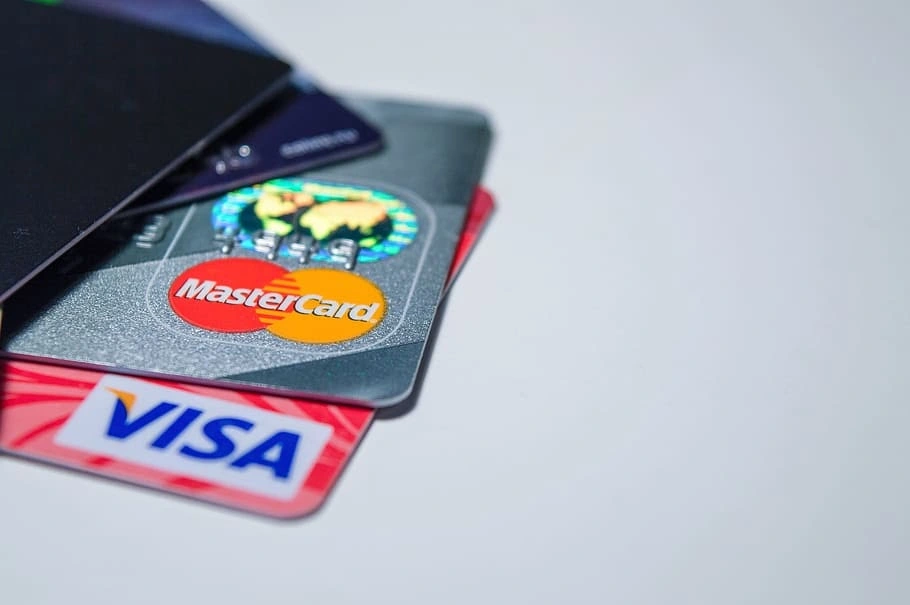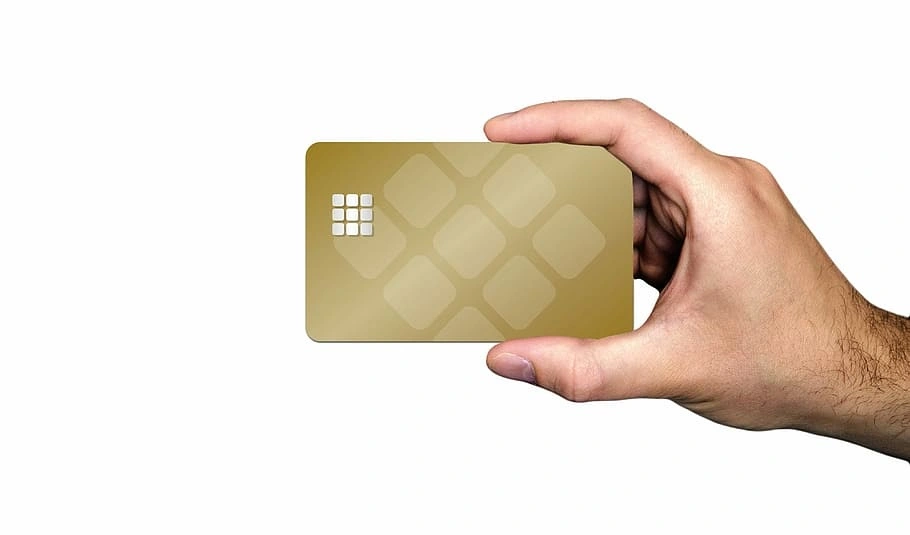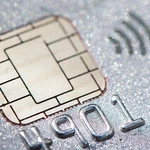How Do Chip Credit Cards Work – Everything You Need To Know
How do chip credit cards work?
Nowadays, EMV chip credit cards rule the payment world because they’re a lot safer than magnetic strip credit cards and less prone to fraud than standard credit cards for in-person payments.
In today’s article, we’ll discuss what a chip credit card is, how it works, and some of the main benefits of chip credit cards. You’ll also learn how to protect your private information when using a chip credit card.
Without further ado, let’s dive in!
Table of Contents
- What is a Chip Credit Card?
- Types of Chip Credit Cards
- Magnetic Strip vs Chip Credit Cards: What’s The Difference?
- How Do Chip Credit Cards Work?
- How Do Chip Credit Cards Work to Benefit the User?
- How Does a Chip Make Credit Cards Safer?
- Are Chip Credit Cards Fraud-Proof?
- What Does EMV Stand For?
- Do All Chip Credit Cards Require a PIN or Signature?
- Extra Safety Tips
- Wrap Up
What is a Chip Credit Card?

How do chip credit cards work, and what are they exactly?
A chip card resembles a regular plastic card that has a microchip along with a magnetic strip.
Chip cards are safer than traditional cards with magnetic strips only because the chip encrypts your data to improve security when paying at terminals, stores, or ATMs. They’re also a lot harder to skim.
Other names for chip credit cards include smart cards, chip-and-signature cards, chip-and-PIN cards, and the MasterCard, Europay, Visa (EMV) card.
To use chip cards, cardholders simply insert their chip credit or debit card into a chip-enabled terminal.
Now that you know what a chip credit card is, let’s learn more about the types of chip cards.
Types of Chip Credit Cards
As a cardholder, all you need to do is insert your chip card into a terminal to make a purchase in the US.
However, cardholders in other countries might need to take extra steps to make a purchase and pull out cash from the ATM using the next chip cards.
Chip-and-Signature Cards
This type of chip card provides extra security over the regular magnetic stripe. Instead of using the usual stripe, the cardholder uses the chip to transfer data from the terminal to the financial institution, and if their transaction is successful, they must sign to finish the transaction.
Chip-and-PIN Cards
We prefer these cards over any other because they’re the most secure cards for buyers. Chip-and-PIN cards work in the same manner as a traditional chip card but also ask for a PIN to make a purchase.
You’ll enter your PIN to withdraw money from ATMs or to make a purchase using your credit or debit card. In the US, PINs aren’t anything new. In fact, they’re used for ATM withdrawals using credit or debit cards. In Canada and other countries, a PIN is required for every transaction.
Therefore, regardless of how or where you use your card, even if it’s a credit card, you still need to enter your PIN to complete a transaction in certain parts of the world.
Read More: How to Change Cash App PIN. Even if you’ve fogotten your old PIN, you can still change it on Cash App. Here’s how!
Magnetic Strip vs Chip Credit Cards: What’s The Difference?
The main issue with magnetic strips on debit and credit cards is that they hold all of the critical data that would be required to make a transaction or to make a counterfeit card.
Using our modern technology, hackers can steal your data with regular phone apps or common stripe readers. So how do chip credit cards work to make transactions safer?
In simple terms, the data in your card’s magnetic strip remains the same over time. On the other hand, the chip in a chip credit card provides a unique code for each purchase that can only be used once. This makes it harder for theft to occur.
Each time you put your chip debit or credit card into a terminal or use a contactless payment option, the system in the chip in your card provides a brand new code for that specific purchase, so even if someone copied your data for a specific POS transaction, they won’t be able to use it.
It’s the same for retailers. Credit chip cards won’t prevent theft and cloning data. However, they do make your data less valuable to thieves and harder to use.
How Do Chip Credit Cards Work?

Plastic cards have been a popular payment method for a long time, providing users with ease of use and security over transactions around the world.
For decades, people’s information, such as available balance and credit limit, was kept in the magnetic stripe on the back.
Chip cards have taken their place and became a go-to payment method after the new technology was developed by MasterCard, Europay, and Visa. EMV stands for Europay, MasterCard, and Visa. These cards feature a gold or silver microchip fixed on the face of the credit or debit card.
How do chip credit cards work? Well, just like the traditional magnetic stripe, the chip has data about your account associated with your card. All you have to do is put your chip card into a chip-enabled terminal like a POS terminal.
Then, the terminal transfers your information to the card issuer’s site or merchant.
If your account balance is sufficient, it’s then approved. Otherwise, the terminal declines the transaction and it doesn’t go through. Some terminals need your PIN or signature to proceed.
The chip technology can help decrease some types of theft resulting from information violations. However, it doesn’t stop a data violation from happening.
How Do Chip Credit Cards Work to Benefit the User?
The main benefit of chip credit cards is that they deliver an extra layer of security when used at ATMs or POS terminals. They’re harder to skip and protect data.
The encryption security is another addition to the theft prevention monitoring already provided by card issuers. Usually, transactions feature coverage for fraudulent use that limits the user’s liability in case of theft. These embedded chips help retailers prevent card-present fraud.
However, other types of security must be applied to stop card-not-present theft. Overall, the chips make transactions more secure by encrypting your information when used at terminals.
Unfortunately, the new technology isn’t a locator system. Therefore, you can’t locate your chip card if it’s lost or stolen using a locator service. What you can do is ask for a replacement card from your card provider. Usually, this type of card isn’t difficult to replace in case of damage or loss.
Until connected to a reader, the chip can’t detect its location for both advertising and security reasons. It’s restricted to supporting authentication of card data during transactions.
Banks watch chip cards’ activity by the purchase amount, location use, and the retailer charging the chip card. If any fraud is detected, the card issuer will try to call the cardholder. Banks provide credit to the chip card account after confirmation of fraudulent charges.
How Does a Chip Make Credit Cards Safer?
Magnetic stripes, also known as magstripe credit and debit cards have been around since the 60s. They use the same technology as analog cassettes, so they record the data to make a transaction.
These cards became very popular in the 1980s and replaced paper-based credit card imprinters. For a long time, they were considered secure.
However, the technology eventually became easy for hackers to hack. Skimmers were one of the methods hackers used to collect sensitive data on the back.
The information held on the back of the card in the magnetic stripe is all they needed to commit fraud or create counterfeit cards. However, that’s no longer possible with the new technology.
The cards operate by providing a bunch of protections that traditional cards with magnetic stripes don’t feature.
A new code is provided for each chip-and-PIN payment, so even if someone successfully steals the code, it’s almost useless for new transactions. This process makes cloning cards practically impossible.
Watch this video to learn more about how chips work to secure cards:
Are Chip Credit Cards Fraud-Proof?
Unfortunately, they’re not 100% fraud-proof. However, they’ve proven to lower losses from stolen and cloned cards. That being said, chip card technology isn’t perfect.
In fact, no current technology or even a combo of technologies provides 100% secure payments. However, this technology has significantly decreased card-present theft.

According to stats, between 2015 and 2018, the chip technology has lowered counterfeit payment theft losses by 80% among retailers who incorporated EMV in their business.
Keeping your business safe and decreasing risks of losses associated with cards and other payment theft includes a combination of new technologies and reliable relationships.
See our related article about The 5 Best Credit Card Processing for Small Business No Monthly Fee. Know what credit card processor is best for your small business.
What Does EMV Stand For?
Since EMV cards were developed by Europay, MasterCard, and Visa, EMV represents these organizations.
The chip technology was initially made to fight losses associated with the use of cloned and stolen cards. EMV started spreading in 1988 and has been riding a rising wave ever since in Europe, Asia, and Canada. It’s been proven to work in decreasing card-present theft in every region so far.
Unfortunately, the US was among the last big global economies to accept the technology and finally complete the transition. The new technology entered the US back in 2015.
That’s when a crucial change in liability occurred. Before this change, liability for theft often fell to card-providing financial organizations. After the change, the liability fell to whoever hadn’t incorporated this new technology. This change helped the acceptance of EMV equipment.
Do All Chip Credit Cards Require a PIN or Signature?
For years, customers who used credit or debit cards with magnetic stripes were asked to provide either a PIN or signature.
The signature was then compared to the signature on the back of their card. However, the invention of chip cards slowly eliminated the requirement for signatures.
Nowadays, it’s not common to be required to sign your transactions if you purchase something with a chip card, but it still happens at some places like restaurants.
Usually, all you have to do is import your credit or debit card into the terminal, wait a couple of seconds, and take your chip card back. The terminal will release a sound once the transaction is approved so you can remove it.
Note that the chip-and-signature method is only practiced within the US. So, if you go abroad, your card might not work, or in the best-case scenario, it will raise some eyebrows.
Other countries, especially European countries, use a chip-and-PIN method that requires both a chip and 4-digit PIN for major purchases. Smaller purchases, on the other hand, don’t require a PIN. They’re often completed by contactless payment.
Now, let’s learn some tips!
Extra Safety Tips
To protect your personal information and credit or debit cards from fraudsters, you need to be vigilant. Meaning, you should keep an eye on your credit reports and card statements.
Report any purchases that you don’t recognize to ensure you aren’t in the wrong for any sketchy transactions. Protect your credit card number, as well.
Hackers often attempt to scam unsuspecting cardholders by creating official-looking emails that require sensitive data. Double-check everything before clicking or replying to emails or inquiries about your sensitive data.
Wrap Up
How do chip credit cards work?

The chip used in chip credit cards helps prevent in-person card theft.
In other words, this relatively new technology is a nightmare for thieves because it makes it very hard for them to clone your cards.
Overall, these cards are better than the outdated magnetic stripe technology in both functionality and security.
